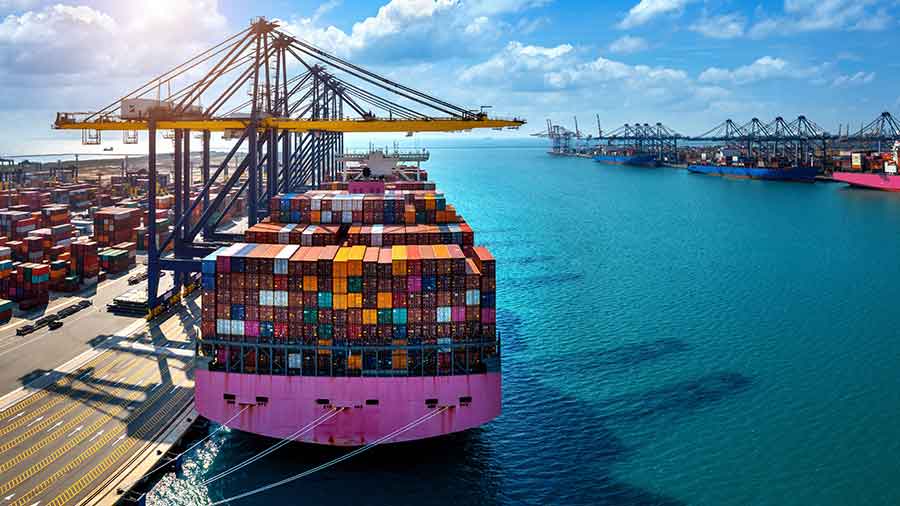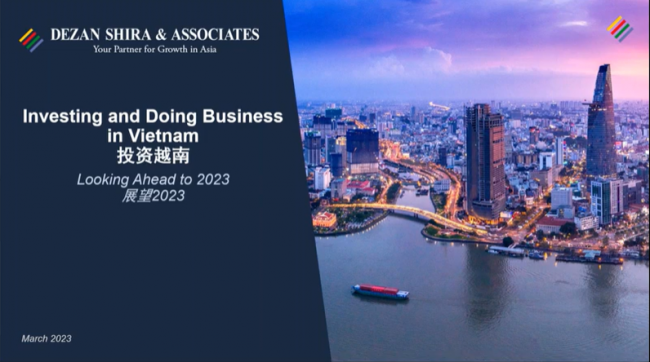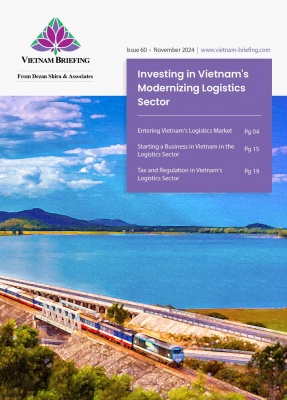Q&A: All Eyes on Vietnam – Why and How to Enter the Market
Building on Vietnam’s favorable conditions for doing business, namely its strategic location, stable political system, ample workforce, and a relatively open environment for FDI, Vietnam has cemented its position as a safe and stable destination for investment. Its GDP growth in 2020 increased by 2.91 percent despite COVID-19.
The key to such an impressive performance was the government’s effective strategies in combating the pandemic. Further, with a solid vision for the future, Vietnam has also created a concrete foundation to bounce back stronger in 2021, with the amendment of a variety of important laws that help improve its business climate, in addition to the free trade network with the EU, the UK, and RCEP countries. The International Monetary Fund (IMF) forecasts that Vietnam would rebound to 6.7 percent and remain the only country with positive growth in five major economies in ASEAN this year.
To help foreign businesses better understand the key developments of the Vietnamese FDI environment and capture emerging opportunities in the country, Dezan Shira & Associates’ Marco Förster, Manager of International Business Advisory, and Phuc Duong, Senior Associate of Business Advisory Service, held a webinar discussing key developments in the Vietnamese market in 2021, market-entry options and the latest legal updates in the country. The webinar can be viewed here.
We highlight key insights below:
Can you give us an overview of the Vietnamese market and any key developments?
Vietnam is a fast and emerging market with stable economic growth and governance. In 2019, Vietnam recorded 7 percent growth. Last year despite the pandemic, Vietnam recorded growth of 2.91 percent above China’s and is one of the few countries in the world to record net positive growth. Not only this, exports grew along with FDI disbursement. The top five sectors receiving investment were manufacturing and processing at US$12.73 billion followed by real estate, electricity production, wholesale and retail, science and technology, and others.
Singapore, South Korea, China, and Japan remain the largest investors in Vietnam. While you can see several investments in areas such as retail markets, buildings, and infrastructure from investors from South Korea and Japan an interesting point to note is that several US and EU investors use their holding companies in Singapore to invest into Vietnam.
Vietnam continues to depend heavily on raw inputs from China, South Korea, and ASEAN with top exports to the US, China, and the EU. In addition, top imports include computers and electronic components, followed by machinery and equipment, telephones and components, textile fabrics, and plastics. A lot of these include raw materials.
Vietnam’s top exports include telephones, computers, and electronics – this is demonstrated by Samsung’s factories in Ho Chi Minh City and Back Ninh contributing to growing smartphone exports. Samsung’s mobile phone exports account for more than 50 percent of the company’s global mobile phone supply as per statistics.
What are some factors for moving from China to Vietnam?
There are several reasons for moving your production from China to Vietnam, but I will focus on four main ones. The first is low-cost manufacturing. This is one of the most well-known reasons for moving to Vietnam however this is a slightly old and outdated reason to do so. While it’s true that Vietnam remains a lost-cost manufacturing center with lower labor costs, Vietnam is now looking for hi-tech investment prioritizing certain hi-tech industries for growth. And while wages are low, compared to China, they are slowly inching higher as the country experiences economic growth.
The second reason is escaping tariffs. Vietnam is able to circumvent duties due to its participation in several free trade agreements. This trend especially started to pick up due to the US-China trade war and the additional push of Vietnam’s intertwining in global FTAs.
The third reason is Vietnam’s as an import/export processing center in Asia. Vietnam’s geographical location helps as it borders China and is in close proximity to other ASEAN countries. It is the go-to choice for regional distribution in ASEAN and APAC if not in global import and processing. Vietnam’s FTAs and double tax agreements are a significant contributor to this trend as well.
The fourth reason is the exodus of foreign professionals relocating to Vietnam, particularly prior to the pandemic. Vietnam’s living costs are typically much cheaper than China’s and are therefore reasonable. Vietnam has a friendly environment and is more open to travelers in general. While there are internet restrictions – social media, search engines, and messaging platforms can be accessed in the country making it easier for foreigners to live here.
It is important to note that Vietnam can be a manufacturing hub but never Asia’s manufacturing hub, simply because of Vietnam’s size compared to China’s. China has 16 times the workforce compared to Vietnam. Foreign investors should be careful with their expectation management when they look to relocate or supplement their China operations.
So how can an investor enter the Vietnamese market?
There are several ways you can enter the Vietnam market. One of the factors that an investor should consider is location. Vietnam’s regions vary and the North, Center, and South, have particular advantages for different industries and types of businesses depending on the investors’ business. For example, the North is good for companies relocating from China but may have higher labor costs. The South is the economic center of the country and may have more opportunities as it has a large consumer base. The center is comparatively less competitive and is a low-cost destination but may be ripe for investment due to several government incentives in cities such as Da Nang.
While there are several office structures to enter the Vietnamese market, in our experience the representative office (RO) and the foreign-invested entity (FIE) are the most popular investment vehicles in Vietnam.
Are there any recent changes to business regulations that an investor needs to be aware of?
The government recently passed the Law on Investment and Law on Enterprises which came into effect in January 2021. These amended laws simplify business registration procedures while also providing updates on conditional business lines, investment incentives, support mechanisms while removing administrative approvals for certain types of investment projects.
Some of the changes include the removal of the seal specimen and more protection for minority shareholders. However, an important factor to note is that for the first time the Law on Investment includes a ‘negative list’. These are sectors where foreign investors are banned from investment such as ‘debt collection services’. The other category is conditional business lines where foreign investment is allowed but subject to government approval for certain sectors.
In addition, the foreign ownership threshold has been lowered from 51 percent to 50 percent. This means that if the threshold is at 50 percent then the company will be treated as a local company. This also means that M&A approval is not required if the transaction does not result in an increase of foreign investors’ ownership ratio in the target company.
Lastly, is Vietnam really ‘it’?
Depends on ‘it’. If ‘it’ means factory of the world then no. Vietnam cannot compete with China in this sense but if ‘it’ means supplementing your China operations and Vietnam’s convenient position with the West and East then yes. There has been a big hype about Vietnam recently but investors need to be conscious about its limitations as well. Bottlenecks have already emerged – and no single country and absorb China’s production. MNCs will continue to diversify operations into other parts of Asia to save on costs and limit production disruption; ASEAN as a whole and Vietnam are primed for this change and future growth.
About Us
Vietnam Briefing is produced by Dezan Shira & Associates. The firm assists foreign investors throughout Asia from offices across the world, including in Hanoi, Ho Chi Minh City, and Da Nang. Readers may write to vietnam@dezshira.com for more support on doing business in Vietnam.
We also maintain offices or have alliance partners assisting foreign investors in Indonesia, India, Singapore, The Philippines, Malaysia, Thailand, Italy, Germany, and the United States, in addition to practices in Bangladesh and Russia.
- Previous Article Vietnam’s Nghe An Province – Investment Hub of the North Central Coast
- Next Article Vietnams Freihandelsabkommen – Chancen für Ihr Unternehmen































